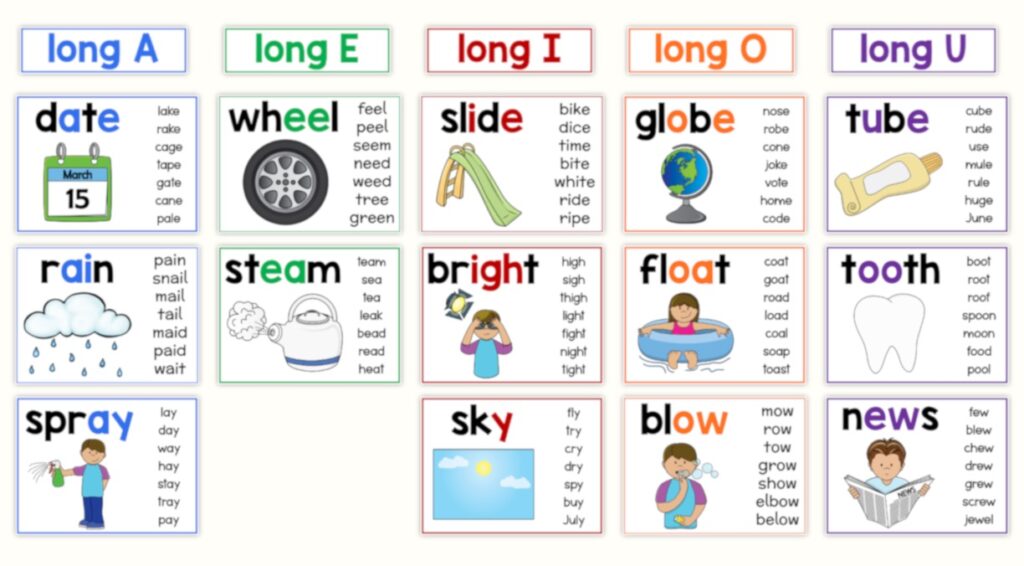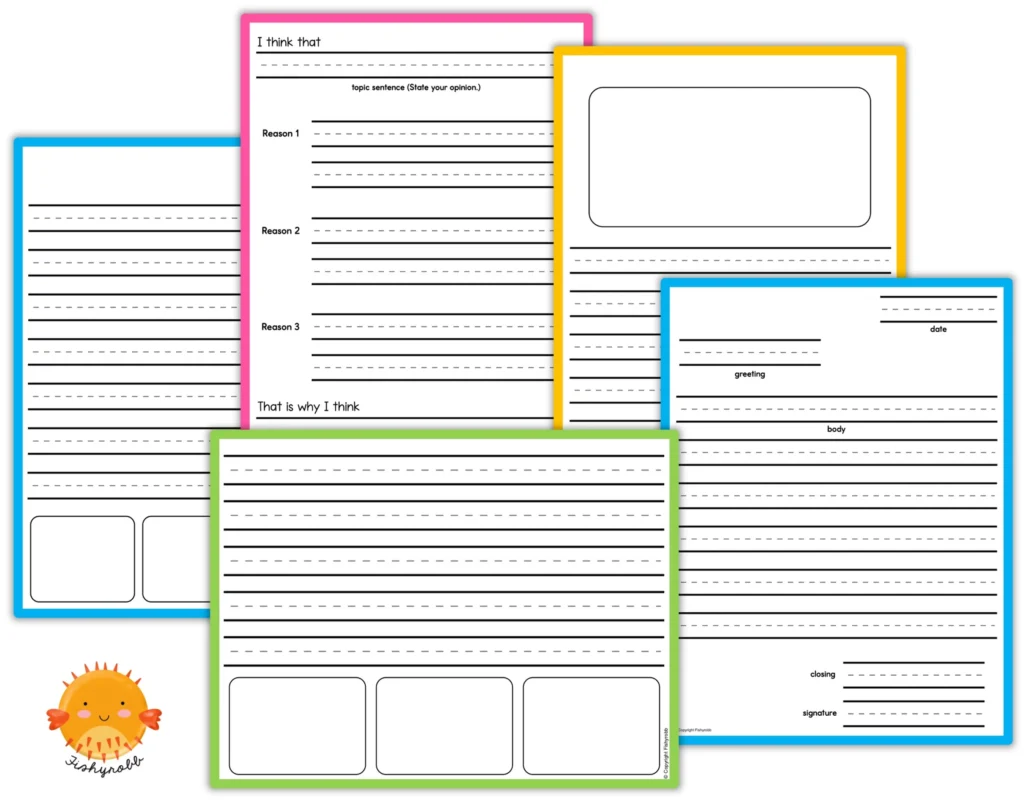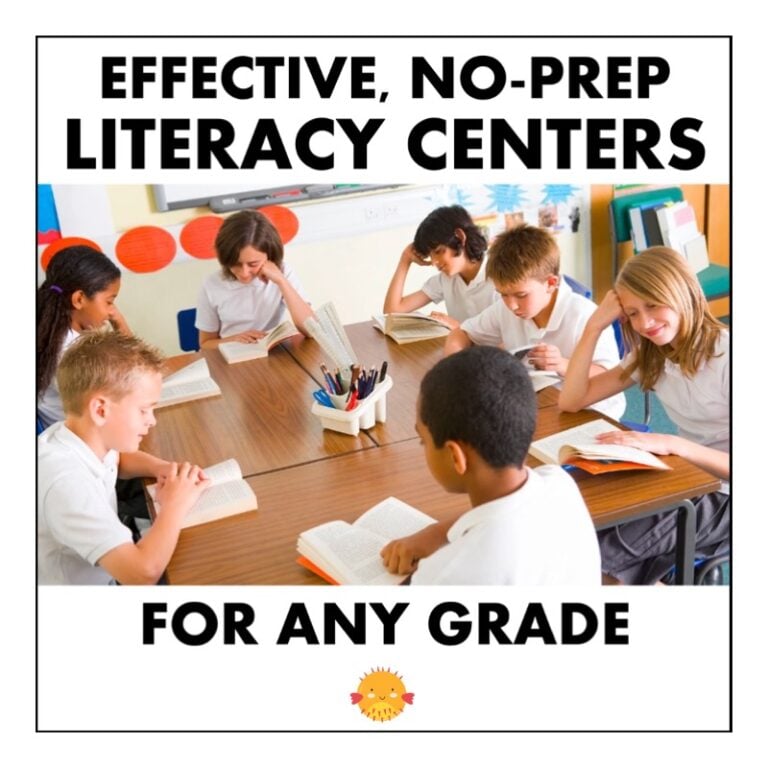
Setting Up A Writing Center in Kindergarten 1st or 2nd Grade
Are you a kindergarten, first, or second grade teacher? Then chances are pretty high that you teach writing throughout the school year. This can be a really fun subject, but also frustrating at times – and setting up a writing center in your classroom is sometimes part of that.
Writing in the primary grades involves a lot more than just jotting down some ideas. Writing for young children encompasses things like fine motor skills, hand-eye coordination, letter formation, concepts of print, generating ideas, planning, spelling, grammar, sentence structure, word choice, and more. Whoa, that’s a lot to think about!
And then there’s the issue of reluctant writers. Even when you’ve taught all of the skills required to become a good writer, you will still have students who just don’t like to do it.
.
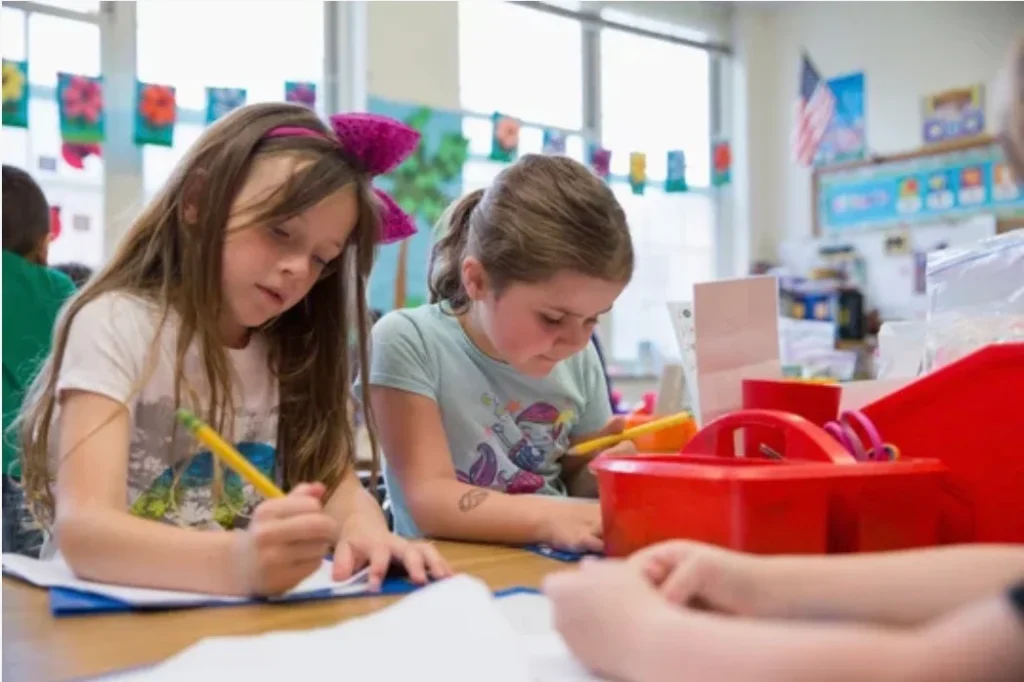
.
How to Encourage Young Students As Writers
One of the best ways to instill a love of writing in your students is to model, model, and model some more. When they see you, their favorite teacher, writing all the time, they will be more likely to enjoy it too. Make sure to use lots of mentor texts in your lessons and engage in shared writing as often as possible.
Another essential for growing young writers is to give them all the writing tools they need. A great way to do this is by setting up a writing center in your classroom.
In this blog post, I’ll share ideas for setting up a writing center and what to put in it to support your students as writers.
.
What is a writing center in the classroom?
A writing center is a dedicated space in the classroom where students can engage in various writing activities with all the visual supports and tools they need right at their fingertips. A well-designed writing center is an engaging space where students can actively develop their writing skills at their own pace.
.
Setting Up A Writing Center In the Classroom
The best time for setting up a writing center is at the beginning of the year. Just like with other literacy centers, it’s important to teach your students your procedures and expectations for using it. Having your writing station in place right away also lets you add to it as you teach students new skills and forms of writing.
Before you begin setting up a writing center, think about how you expect students to use it. Do you want them to work together or independently? Will it be a casual space or more structured?
Most teachers opt to use a small table as the work space so students have a proper place to sit. If you are concerned about students developing good handwriting, having a table and chairs will support them better than flexible seating and floor space.
.
What’s the best spot for setting up a writing center?
When choosing where to put your writing center, think about when and how it will be used. Here are some questions to ask yourself:
- Will it be part of the rotations during your literacy center time?
- Can your students work independently or do you need to be in close proximity to help them?
- What will the noise level be: quiet work space or students talking and collaborating in small groups?
- How many students will be working there at one time?
- Should your bulletin board or word wall be visible or will students use their own portable word wall?
Your answers to all of these things will help determine the best placement for your writing center. In kindergarten or first grade, students will need more support and make more noise than second graders, so keep that in mind.
.
What should be included in your writing center?
When setting up a classroom writing center, you’ll want to include a variety of materials to support students in their writing. Here are some items I suggest including:
- anchor charts and visuals
- various word walls
- different types of writing paper
- writing tools and supports
- space to display students’ writing pieces
.
Anchor Charts
Teaching students the different forms of writing is one thing. Young kids remembering all the details is another. Having anchor charts in your writing center serves as a great visual reminder of what components they need to include in their formal writing. Graphic organizers help students plan their writing and stay on topic.
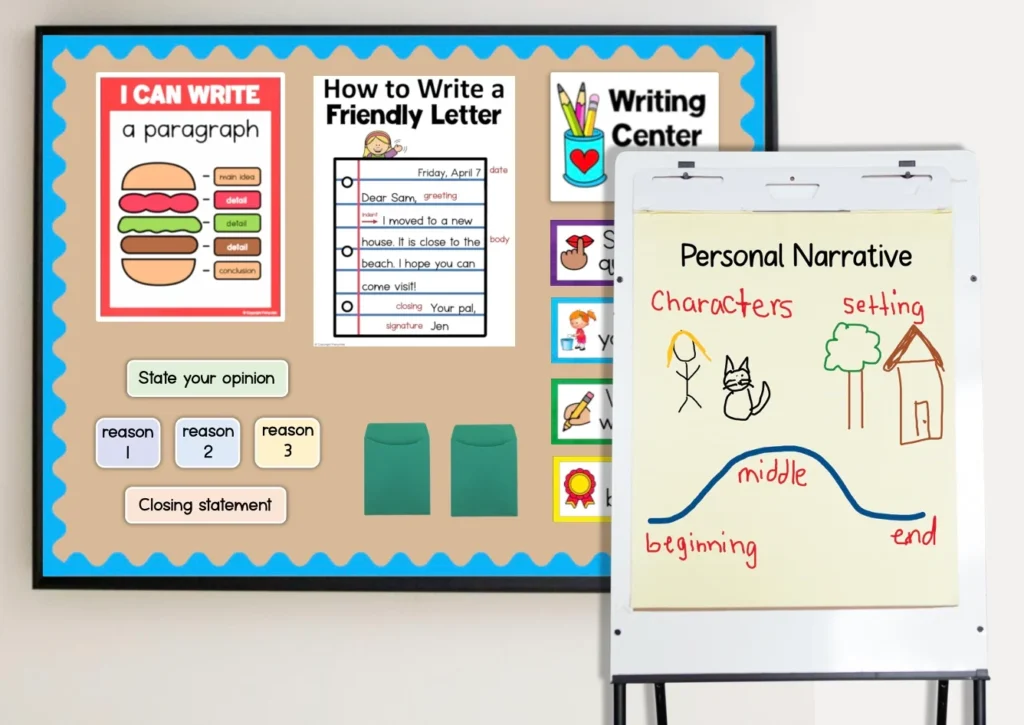
Which charts you display will depend on your curriculum and grade level expectations, but here are some ideas:
- Friendly Letter Format
- How to Write a Paragraph
- Narrative Story Elements
- Opinion Writing Format
Other visual supports to have on display are writing checklists, writing process posters, and writing center rules.
Word Walls
There are so many ways to approach a word wall. First, will it be displayed for everyone to see or will students have their own personal word walls? If displayed, will you use a bulletin board, a pocket chart, or something else? A bulletin board saves floor space, but is also harder to switch out than words in a pocket chart.
Second, what type of word walls do your students need most? Some options are spelling words, sight words, vocabulary words, theme words, or phonics patterns.
Many primary teachers opt for thematic word walls in their writing centers. These are words grouped by topic that help students generate ideas and spell words pertaining to a certain subject or theme. Examples of this would be family words, travel words, school words, food words, etc. I really like this type of word wall because it keeps students focused on the topic and makes it easy to find the words they need.
A great option for thematic words is to provide students with themed word banks. These are picture cards on specific topics labeled with the corresponding words that students can refer to as they write. I like to keep them in a basket where students can choose the one they want to use. Single-page, portable word walls like this are perfect for little hands:
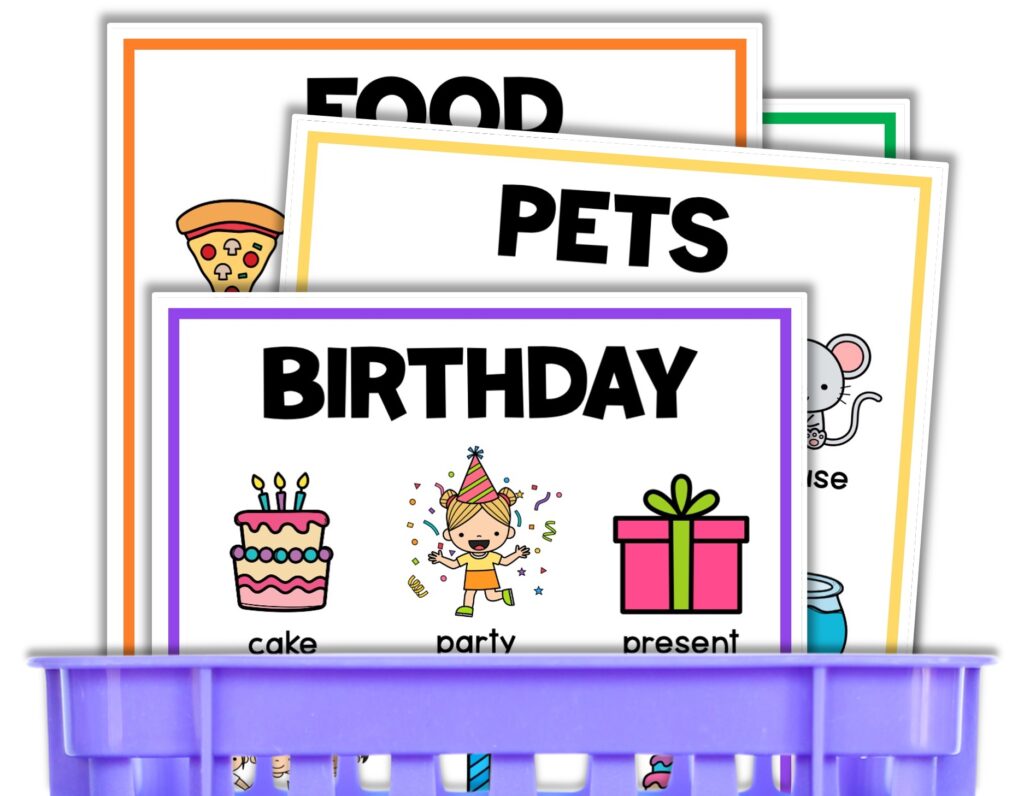
.
Another word wall you will likely want to include is one for sight words. You probably already have them displayed in your classroom, so just make sure they are visible from your writing center.
Sight word cards can be typed, printed on index cards or sentence strip, or purchased pre-made. Whichever you choose, make sure the font is large and easy to read. No fancy lettering in primary grades please!
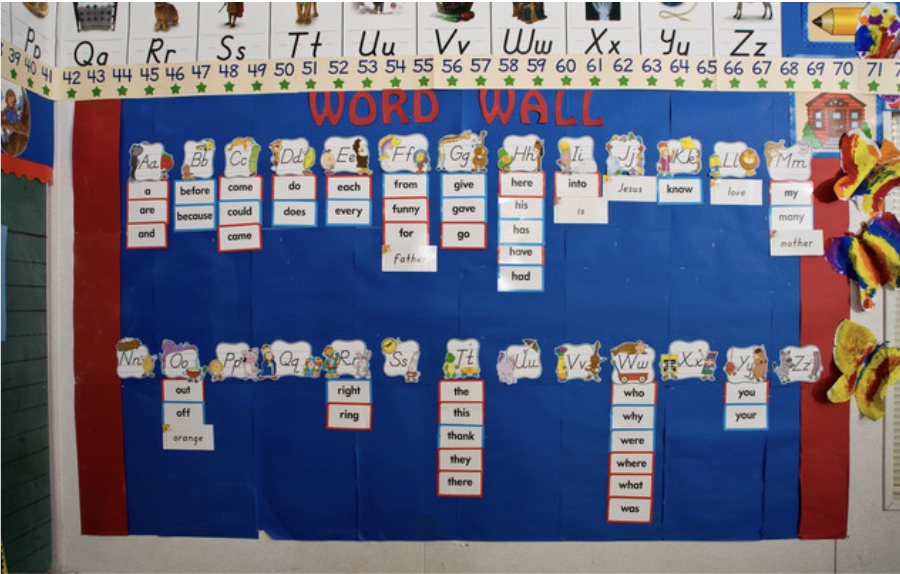
.
The last type of word wall that is essential in a primary writing center is a phonics wall. Kindergarten and first grade students learn a LOT of new phonics rules. Second graders build on these with more advanced phonics patterns such as vowel teams and silent letters. A phonics wall is the perfect way to remind them of these rules when spelling and provide support to students who need it.
.
Writing Paper
Different types of writing call for different kinds of paper. Some to have on hand include lined and blank paper, handwriting paper, storytelling paper.
This is a set of free printable writing papers you can include when setting up a writing center in your classroom.
.
Writing Tools
A writing center should be well-stocked with all of the necessary tools students need. Having a variety of options to choose from is very motivating for young children. It also ensures that they have what they need without interrupting you to ask for something.
Here are some items you may want to have available:
- pencils
- markers
- crayons
- colorful pens
- highlighters
- dry erase boards and markers
- erasers
- spacing tools
- pencil sharpener
- sticky notes
- envelopes
- scissors
- glue
- dictionary
- sentence starters
- writing prompts
➡️ Teacher Tip: Providing students with personal dictionaries is a great way to help them be more independent. These are small, printable booklets with a page for each letter of the alphabet. Students can add words to it that they use frequently in their writing and have trouble spelling.
.
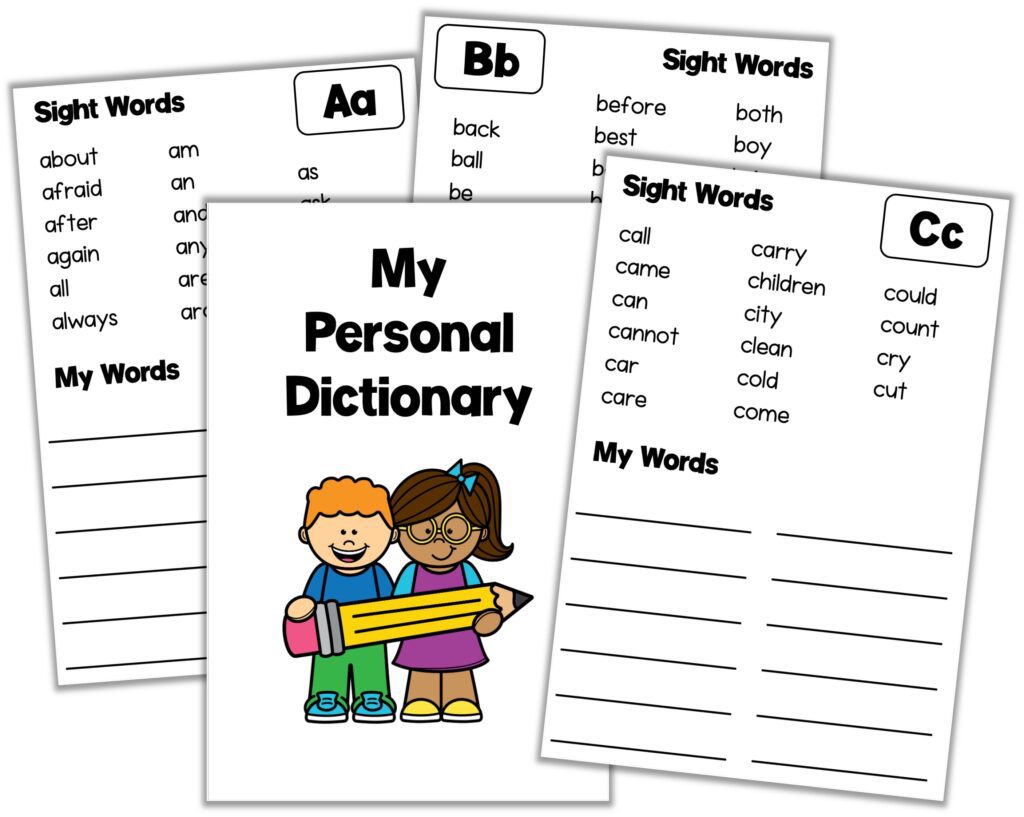
.
What are the benefits of setting up a writing center in the classroom?
Most classrooms have students with a wide range of abilities. A well-designed writing station or center is beneficial no matter what their skill level. For emerging writers and students who struggle, your writing center can provide the motivation and scaffolded support they need to be successful. And for those who need enrichment, a good writing center provides inspiration and opportunities to explore writing in new and different ways.
.
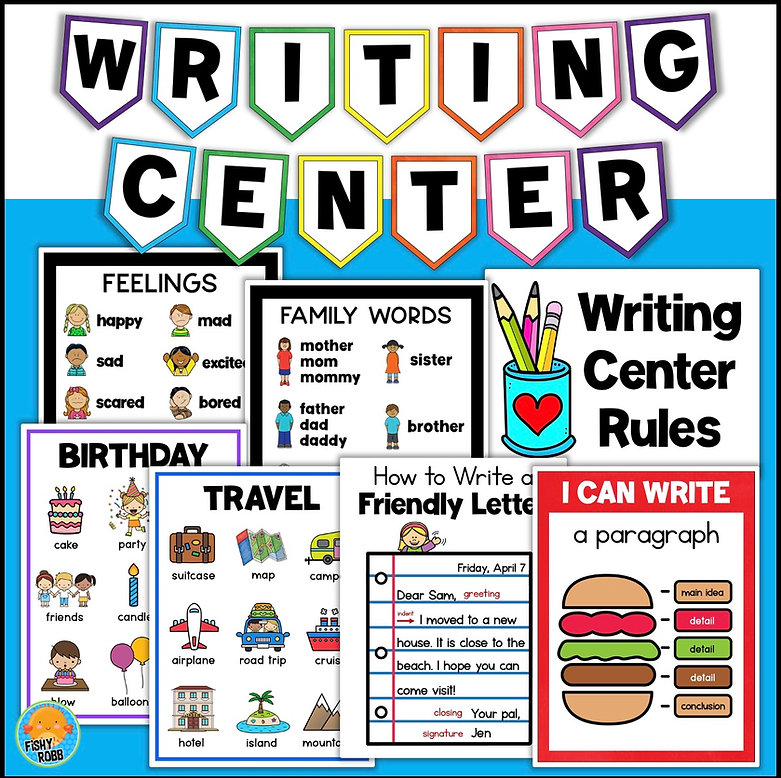
Setting up a writing center is quick and easy with this set of posters, anchor charts, supply labels, and more!
Bright eye-catching colors and easy-to-read fonts make it perfect for kindergarten, first grade, and second grade students.
Includes everything you need to support and inspire young writers.

